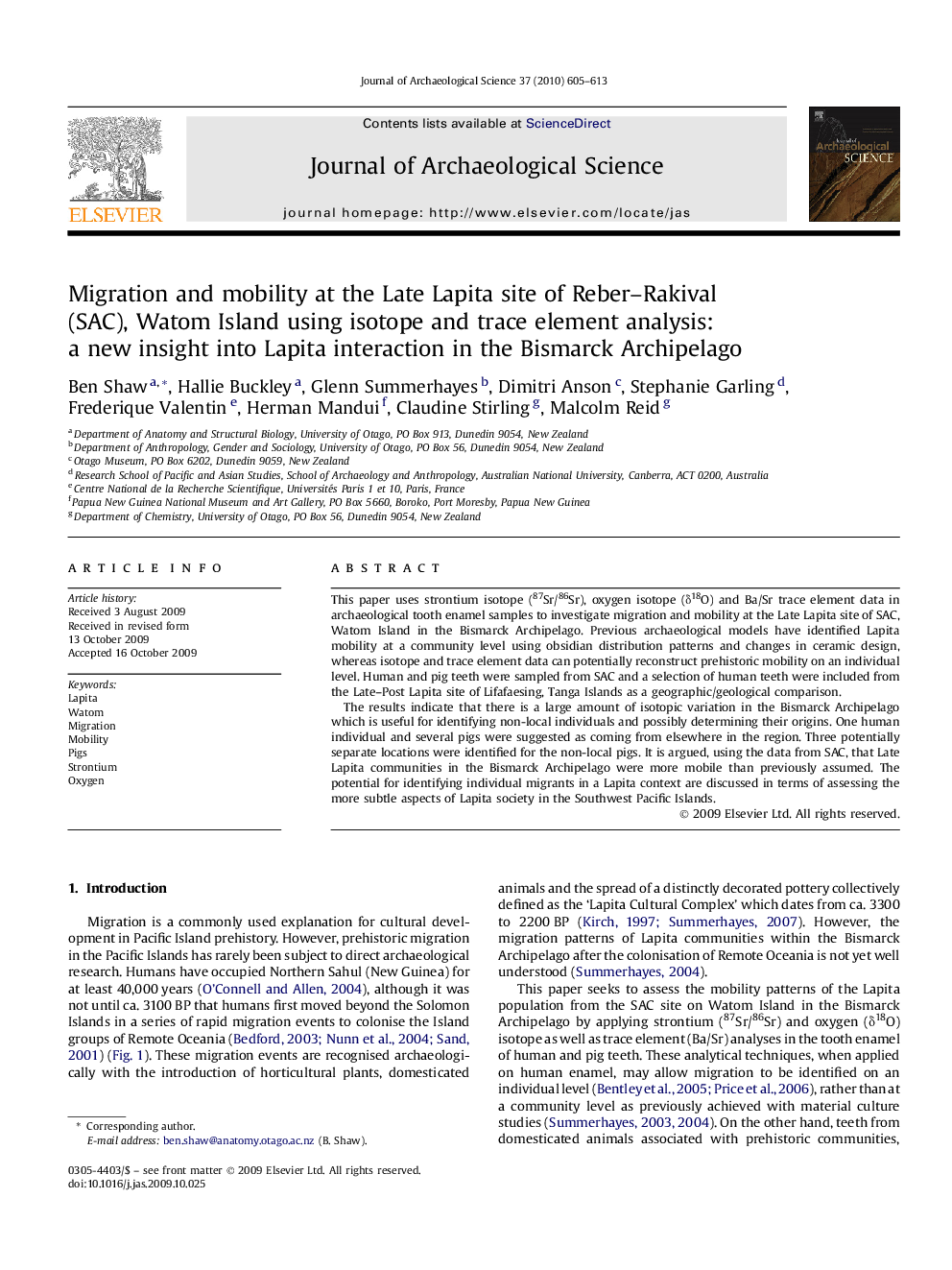| Article ID | Journal | Published Year | Pages | File Type |
|---|---|---|---|---|
| 1036186 | Journal of Archaeological Science | 2010 | 9 Pages |
This paper uses strontium isotope (87Sr/86Sr), oxygen isotope (δ18O) and Ba/Sr trace element data in archaeological tooth enamel samples to investigate migration and mobility at the Late Lapita site of SAC, Watom Island in the Bismarck Archipelago. Previous archaeological models have identified Lapita mobility at a community level using obsidian distribution patterns and changes in ceramic design, whereas isotope and trace element data can potentially reconstruct prehistoric mobility on an individual level. Human and pig teeth were sampled from SAC and a selection of human teeth were included from the Late–Post Lapita site of Lifafaesing, Tanga Islands as a geographic/geological comparison.The results indicate that there is a large amount of isotopic variation in the Bismarck Archipelago which is useful for identifying non-local individuals and possibly determining their origins. One human individual and several pigs were suggested as coming from elsewhere in the region. Three potentially separate locations were identified for the non-local pigs. It is argued, using the data from SAC, that Late Lapita communities in the Bismarck Archipelago were more mobile than previously assumed. The potential for identifying individual migrants in a Lapita context are discussed in terms of assessing the more subtle aspects of Lapita society in the Southwest Pacific Islands.
